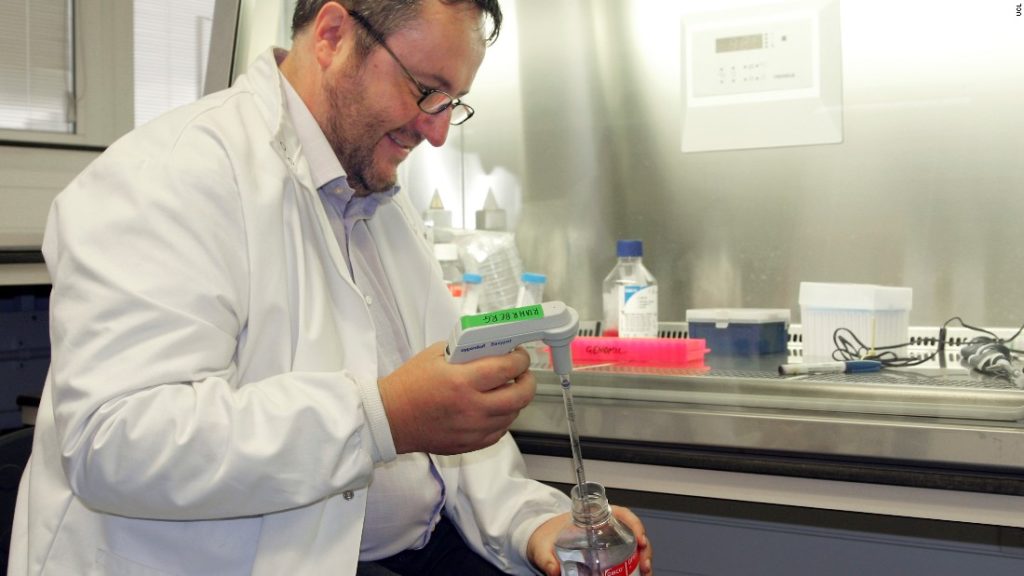News
New Research Reveals Stem Cell Therapy Could Cure Certain Types of Blindness
18/07/2018
Within as little as five years, one of the most common causes of blindness could be cured and available to the public.
Age-related macular degeneration (AMD) is the third leading cause of blindness worldwide and almost 513,000 people in the UK, this equates to 2.4% of the adult population and this number is expected to increase by one-third over the next decade rising to 700,000 by 2020. The condition destroys a person’s central vision. Although this new revolutionary stem cell therapy has in trials been able to reverse it’s effects.
It has been predicted that the UK may be facing a ‘Blindness epidemic’ by the Daily Express, but this new stem cell therapy could be the answer to the sight loss epidemic that Great Britain may be facing.
AMD damages the back of the eye concentrating on the retina this is dangerous as the retina is the base for central vision. This loss of vision means that there is a massive loss of independence.
Although this new stem cell treatment could be the answer as it works by implanting a ‘patch’ of stem cells over the persons damaged part of the back of the eye.
Currently, this stem cell treatment has been successful in the first human trials and researchers are extremely hopeful for the future.
The results were outstanding, patients who received the therapy were not only able to read again but could actually see their family’s faces which used to just be a blurry image without clarity.
This stem cell therapy was developed by experts from the University College London collaborating with the Moorfields Eye Hospital working on the London project to cure blindness.
Pete Coffey is a professor at University College London explained that the improvement of vision is measured by way of lines on a reading chart, this chart proved that the sight in the patients had improved dramatically.
Coffey, said “We said we’d get three (out of the proposed ten) patients with vision recovery of three lines. They probably wouldn’t get reading vision back.”
Astonishingly, Coffey explained, “The first patient has got six lines improvement, which is astounding, and the second has five lines and he seems to be getting better as the months go by.”

Professor Pete Coffey is a professor at University College London
Added to this, the patients were also reading, said Coffey before the stem cell treatment, “At best, the female patient before treatment, could read about one word a minute with magnification. She is now reading 80 words a minute and the man is reading 50.”
This stem cell treatment which was tested by researchers was specifically made for people that suffered from the ‘Wet’ form of AMD. This wet version of Age-related macular degeneration is caused by a sudden leakage from blood vessels located in the eye. This then results in the destruction of the macula a key component of the retina in the eye.
The cells found within the macula are the retinal pigment epithelial, these are crucial for the light sensitive photoreceptor cell to function properly in the eye, without this retinal pigment epithelial support the eye becomes damaged impairing clear vision.
Following the most recent trials holding such promising results, the researchers are now planning to test their stem cell therapy on one more time do all the checks to make sure it is completely safe for the general public.
If the final trial goes well, there is a hope to have the stem cell treatment available for surgeons to use for patients with wet AMD. While this development is a huge development for stem cell technology, the treatment is limiting as the stem cell therapy cannot treat dry age-related macular degeneration which is the more common type. Dry AMD is increasingly problematic as it develops more slowly and it currently cannot be cured, although Coffey said that stem cell therapy in the future could change that.
Dr. Carmel Toomes, an associate professor at the Leeds Institute of Molecular Medicine, commented upon the result remarking them to be promising. “These results give the many patients out there who suffer from AMD and other retinal degenerations real hope that stem cells replacement therapy may be a reality in the near future,” she said. The fact that this early clinical trial has shown positive results means that a cure truly could be quite close to becoming a reality.
Protect Their Future Health
If you want more information on how you can protect your child’s future health by banking their cells, get in touch with our friendly team today or order your free information pack.
